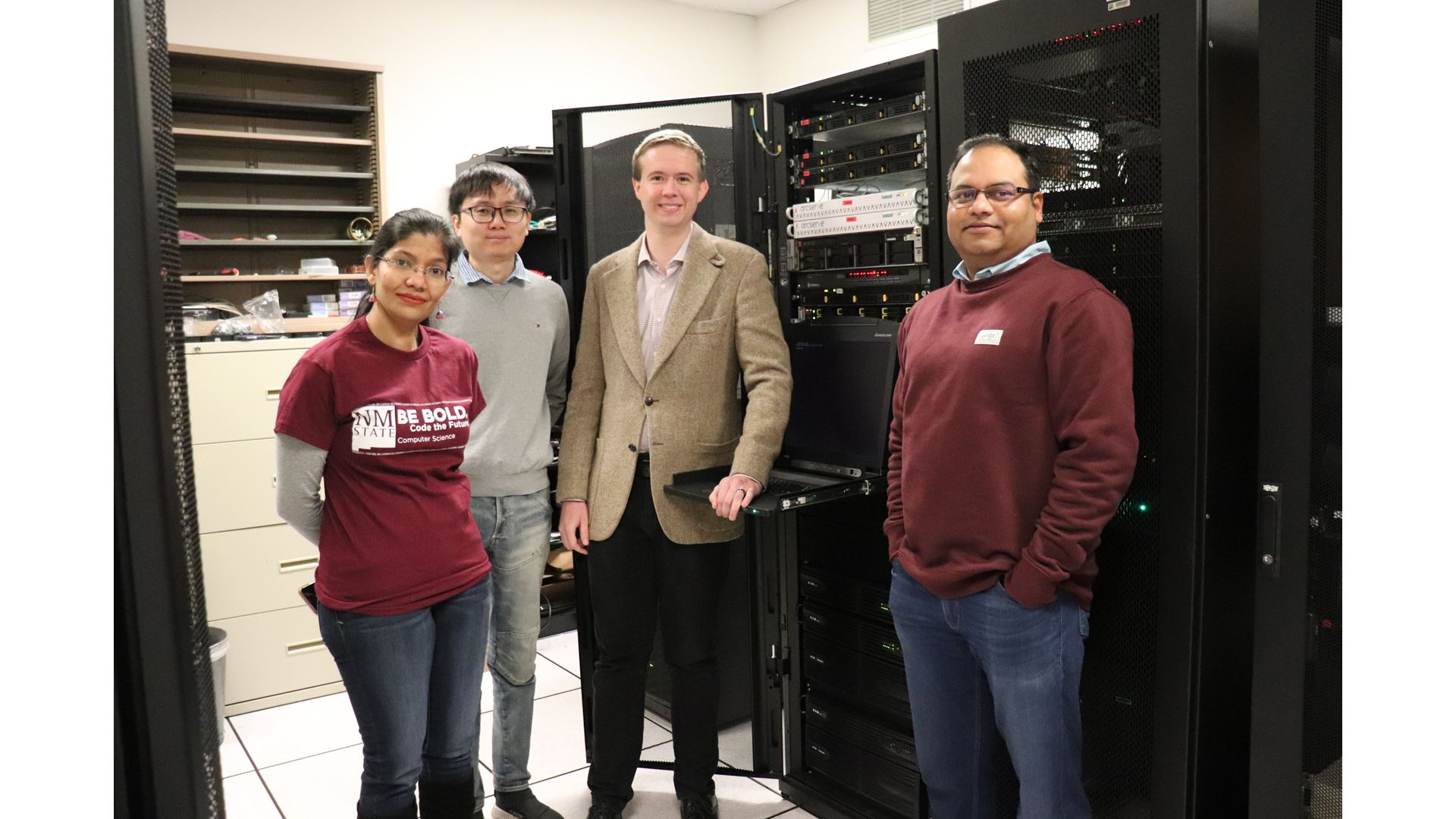What is the “Internet of Things” (IoT)? This is a mechanism to expand the internet to allow us to add any device or machine to the internet that can measure environmental parameters, generate associated data, and transmit it through a communication network. Examples include smartphones, smart refrigerators, smartwatches, smart fire alarms, smart door locks, smart bicycles, medical sensors, fitness trackers, smart security systems, etc.
Insights from these IoT-connected devices can be used to build new technologies.
Researchers who are part of the Cybersecurity and Resilience Research Group at New Mexico State University are studying the “energy Internet of Things” (eIoT), the concept of connecting energy devices to the IoT, which is considered a promising technical aid for energy management and resilience change drivers, such as rising demand for electricity, the prominence of the variable clean and distributed energy resources (DERs), the emergence of electrified transportation, and deregulation of power markets and innovations in smart grid technology.
Their goal is to build a new, more trusted communications and sensitive attack detection system for smart power grids using a network of secure computers, which can each learn what is “normal” behavior in their part of the grid and alert grid operators when sensors or controllers in the grid are broken or under attack.
The U.S. Department of Energy (DOE) awarded NMSU a $750,000 grant over the next three years for a project titled “Building a federated learning framework for trustworthy and resilient energy Internet of Things (eIoT) infrastructure.”
“The DOE grant on building a federated learning framework for trustworthy and resilient energy Internet of Things will help us to perform collaborative basic research with DOE’s National Renewable Energy Laboratory (NREL) and another collaborator at the Microgrid Systems Lab,” said Jay Misra, computer science and electrical and computer engineering professor and principal investigator for the grant.
Misra's team includes co-principal investigators Roopa Vishwanathan, NMSU computer science assistant professor; Milan Biswal, NMSU computer science research assistant professor; Tao Wang, NMSU computer science assistant professor; Joshua Reynolds, NMSU computer science assistant professor; and David Breecker, Microgrid Systems Lab. Richard Macwan and Vivek Singh are collaborators at NREL. A group of graduate students also will be part of the research team.
“Four graduate students will have the opportunity to work with several researchers at NMSU and with collaborators at NREL and Microgrid Systems Lab via internships, externships and visits to get a well-rounded understanding of the field to make innovations,” said Misra.
Misra aims to be the first to propose a foundational blueprint for secure, verifiable and privacy-preserving federated machine learning frameworks that can be used to build the trustworthy and resilient eIoT infrastructure of tomorrow.
Reynolds described the five key components of the project: “First, designing the foundational identity system to keep track of all the smart grid's control systems' identities; second, designing a network of computers that use machine learning to learn what is normal among controllers and sensors in their part of the grid, and alert grid operators when they suspect an attack; third, placing those machine learning security systems onto secure hardware, and deciding where are the most strategic places in the grid to place them to get the most value per dollar; fourth, using verifiable computation mechanisms to verify that the machine learning systems don't store or reveal private or critical and secure information; and fifth, making a simulation copy of the network so they can test how well it detects attacks without hurting the actual power grid.”
Each researcher is approaching different aspect of the project. Reynolds’ lab's role is to build a partition tolerant public key infrastructure to allow smart electric grids to authenticate their components even if the grid has been divided by disasters or other damage.
“We can only trust our security framework to the extent that we have assurance of the identity of the computers running the electric grid,” Reynolds said. “This is currently done in a centralized way by power companies.
“But having a decentralized public key infrastructure would allow us to decide which computers are trustworthy in the overall framework, even if we cannot contact or cannot trust the power company headquarters during an attack. If an attacker gains control over some controllers in the electric grid, our framework should sound the alarm when they behave maliciously. This would be impossible to do if the attacker had the power to impersonate other, honest controllers while harming the grid.”
Vishwanathan's role is to investigate strategic deployment of a small set of eIoT edge devices, “each equipped with a trusted execution environment (TEE) to verifiably execute the federated machine learning model we develop and store the updates. Our research challenge is to identify the minimum proportion of such devices and their placement to ensure the proposed federated machine learning (FML) frameworks’ resilience, while keeping the cost, computational burden, and latency within acceptable limits,” she said.
Tao explained his role is to develop an AI-empowered tool to defend against conventional network attacks as well as emerging attacks, "For example, abnormal user behaviors, data tampering attacks, model poisoning and evasion attacks for low-end eIoT devices," he said.
“In the short term, the project will build the basic foundations for distributed identity and trust management in the eIoT,” said Misra. “Using this foundation, we will build trustworthy FML frameworks for increasing eIoT efficiency and resilience. This innovation will help move the needle on broader application of the eIoT concept.”
Misra explained that the ideas disseminated through peer-reviewed publications, workshops and presentations will not only encourage basic research in the eIoT area, but also spark similar basic research in allied areas of cyber physical systems.
“The opportunity also will cement inter-institutional collaboration and create a pipeline to recruit students from traditionally underrepresented populations, train them in the area, and prepare them for cybersecurity and smart grid careers by helping them learn how to build cutting-edge grid technologies.”
-30-

